Summary
Discover the story of an 18th-century French female painter, Anne Vallayer-Coster, a largely forgotten still-life virtuoso. From her early life to the evolution of her distinctive style, this article provides an insightful journey through the life and works of this talented artist.
An Artistic Family
Anne Vallayer-Coster’s (1744-1818) father was a goldsmith; her mother painted miniatures, and the family lived at the Gobelins tapestry factory. She grew up surrounded by art. However, she does not seem to have had much formal training, except from her father’s friend, landscapist Joseph Vernet (1714-1789) and botanical specialist Françoise Basseporte (1701-1780).
Like many female artists of the period, Vallayer-Coster struggled to gain an artistic education in a world where a young woman working in the studio of a male teacher was considered highly improper. However, her first surviving works date from 1764. From an early age, she was determined to pursue an artistic career.
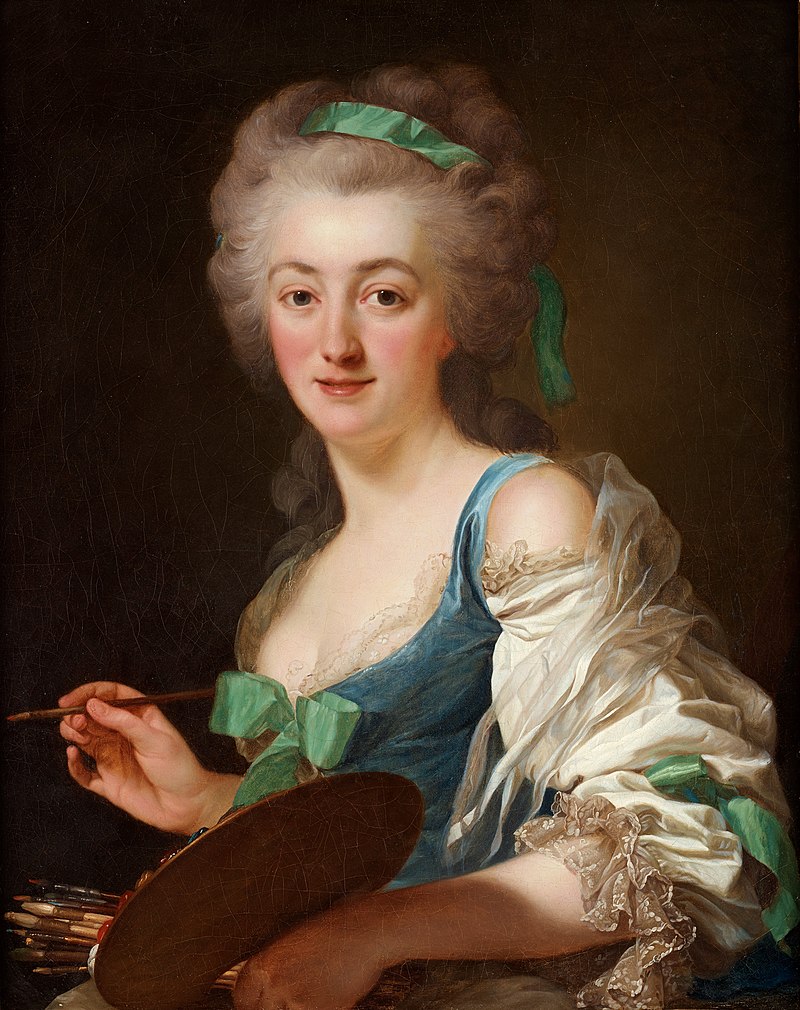
Alexander Roslin, Portrait of Anne Vallayer-Coster, 1783, Crocker Art Museum, Sacramento, CA, USA
Academy Success
At age 26 and struggling to achieve recognition as a painter, Vallayer-Coster submitted two works to the Academy: Attributes of Painting, Sculpture and Architecture and Attributes of Music. It was a high-stakes gamble. Not only was she a young woman seeking entry to an institution with only two female members, both older and married to Academicians, but she was also deliberately measuring herself against Jean Siméon Chardin (1699-1779), the acknowledged master of still-life. Chardin had exhibited two paintings of the same name only five years before, and he was one of the voting members who would decide her fate. The gamble paid off: she was unanimously accepted.
Vallayer-Coster cemented her success the following year by exhibiting the two Attributes and nine other works at the Salon. She gained significant attention. Denis Diderot, the French philosopher who regularly wrote on art, praised the “high level of quality” of her work, which he described as “far above that which is to be expected of a woman.”

Anne Vallayer-Coster, Attributes of Music, 1770, Louvre Museum, Paris, France.
Still Life
The Attributes established Vallayer-Coster as a still-life painter, a label that stuck despite attempts to broaden her range of subject matter. Still-life was considered a lower, less intellectually demanding art form than religious and historical painting, even ranking below portraiture. It was also deemed suitably “safe” for a woman artist: there was no violence or nudity and no need to interact with members of the opposite sex.
Despite being a member of the Academy, Vallayer-Coster and other female artists could not attend the classes there and were not allowed to draw from live models. She also faced overtly sexist and patronizing criticism. One writer praised her for “remaining in her sphere” of “nice, little genres.”
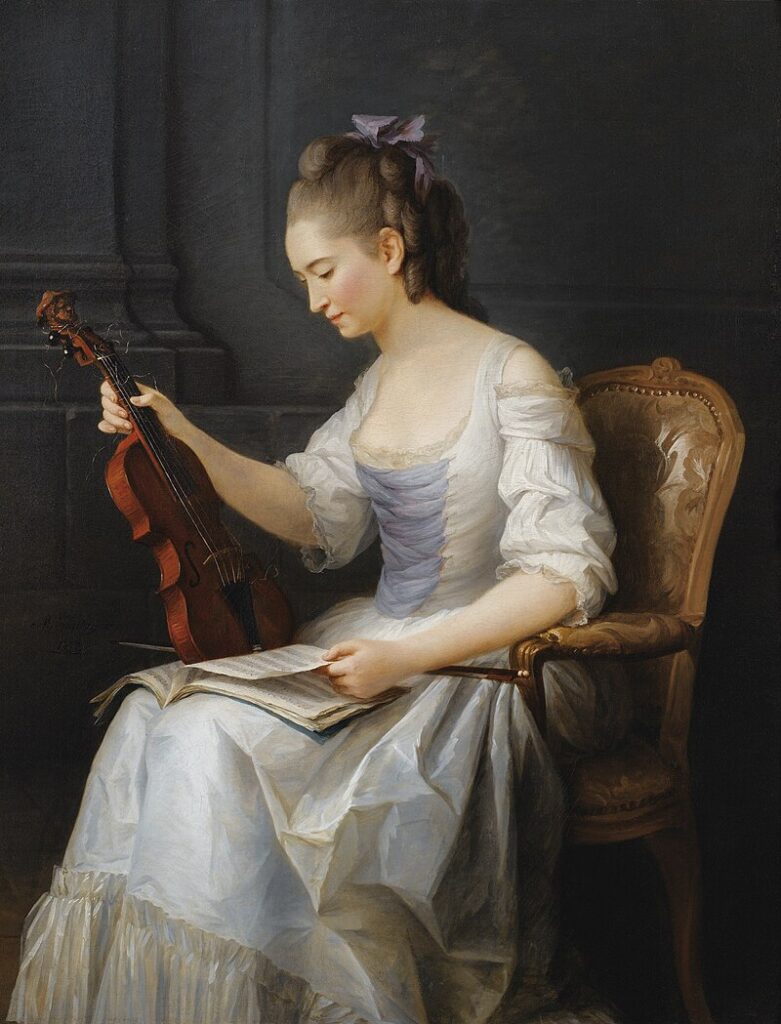
Anne Vallayer-Coster, Portrait of a Violinist, 1773, National Museum, Stockholm, Sweden.
Genre
Evidence shows that Vallayer-Coster did not want to be pigeonholed as a still-life painter. Her 1773 Portrait of a Violinist is a definite attempt to establish herself as a figurative artist. Although the sitter is probably one of the artist’s three sisters, this is not a portrait but a genre painting. The female figure is generic, and the work contains a subtle narrative or moral message conveyed through the broken strings of the instrument and the violinist’s poignant expression.
Although she never attempted historical painting, Vallayer-Coster hinted at her ability to do so with trompe l’oeil recreations of relief carvings. She also included classical sculpture in her still-lifes. This costume portrait of Madame de Saint-Huberty in the Role of Dido represented an acclaimed singer of the time, also portrayed by Elisabeth Vigée Le Brun. Here, positioned against classical columns, in costume, and performing in an opera based on Virgil’s Aeneid, she could easily be a figure in a historical painting.
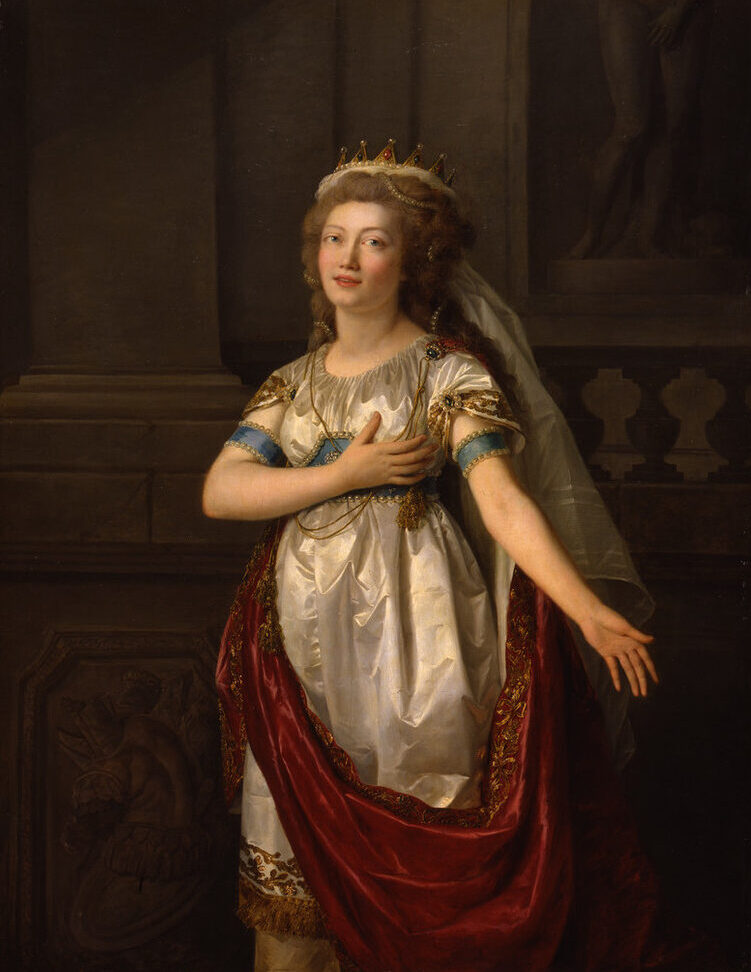
Anne Vallayer-Coster, Madame de Saint-Huberty in the Role of Dido, 1785, National Museum of Women in the Arts, Washington DC, USA
Portraits
Vallayer-Coster also achieved success as a portraitist and a miniaturist. Her ability to render surface detail and texture was well-suited to representing the extravagant fashions of Rococo France, and sometimes her representations of women, in particular, seem to concentrate on lace and satin at the expense of character.
However, Vallayer-Coster had a keen eye for everything. Her portrait of sculptor Joseph-Charles Roettiers evocatively captures not only the physical details of old age with the wrinkled skin and toothless mouth but also the youthful spirit that lies beneath. She barely sketches in the white lace and detailing on the coat and does not bother with a background, allowing the viewer to focus entirely on the character, the sitter, with his engaging half-smile and bright eyes.
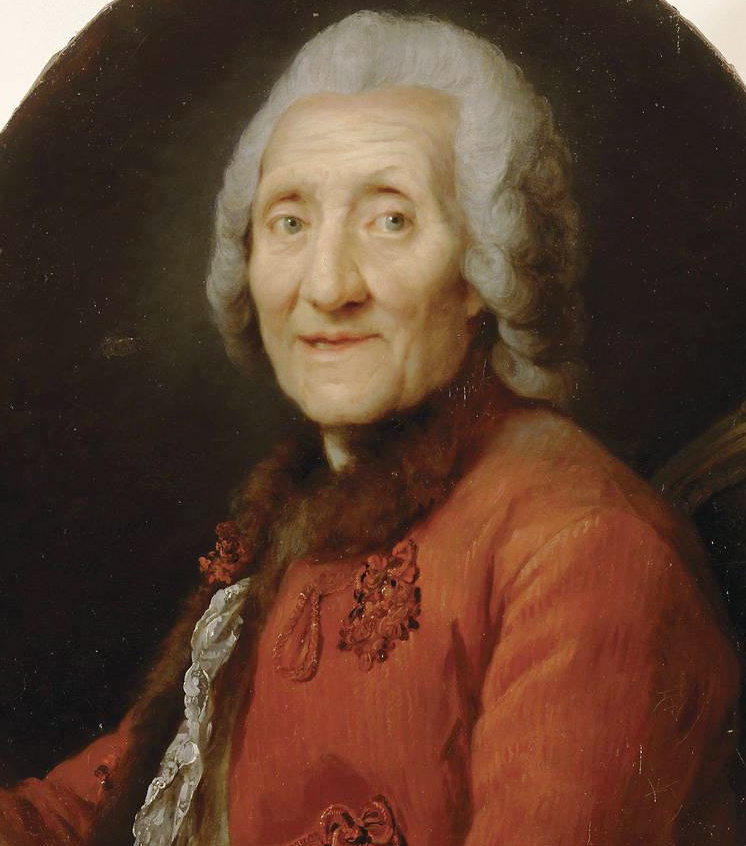
Anne Vallayer-Coster, Joseph-Charles Roettiers, 1777, Palace of Versailles, Versailles, France.
Royal Patronage
In 1781, Vallayer-Coster attracted the attention of Marie Antoinette, the French Queen. This support was instrumental in gaining her patronage at court, and she produced portraits of several members of the royal family, including a pastel of the queen and a painting of Madame Victoire, the King’s aunt.
With Marie Antoinette as a patron, Vallayer-Coster also acquired rooms in the Louvre, with an income of 1000 livres. She was the first woman to be given this honor. There also seems to have been a personal closeness between the two women. The Queen attended Vallayer-Coster’s wedding and even signed the marriage contract.
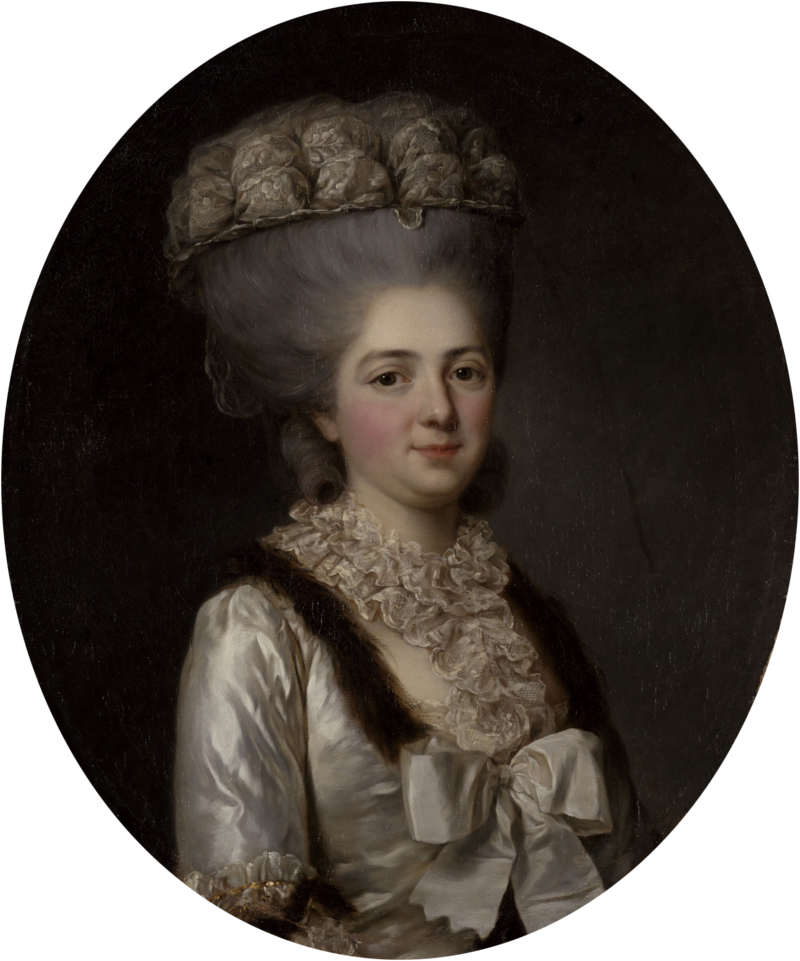
Anne Vallayer-Coster, Marie-Louise-Thérèse-Victoire de France, known as Madame Victoire, c.1779-81, Palace of Versailles, Versailles, France.
Playing the System
Skill would only get you so far in the competitive art world of 18th-century France. Vallayer-Coster seems to have been particularly good at cultivating friends and patrons. Her marriage to a successful lawyer and member of parliament certainly helped.
Equally, she was prepared to exploit her femininity. The 1783 portrait of her by a friend and fellow artist, Alexander Roslin, shows Vallayer-Coster as a practicing artist with palette and brushes in hand and as an assertive woman directly holding the viewer’s gaze. However, she is carefully dressed and posed, her sleeve slightly slipping to expose her shoulder. The loose hair and busy, crumpled folds of the fabrics on her arm suggest action and energy, but they also emphasize that she is an attractive woman and an artist.
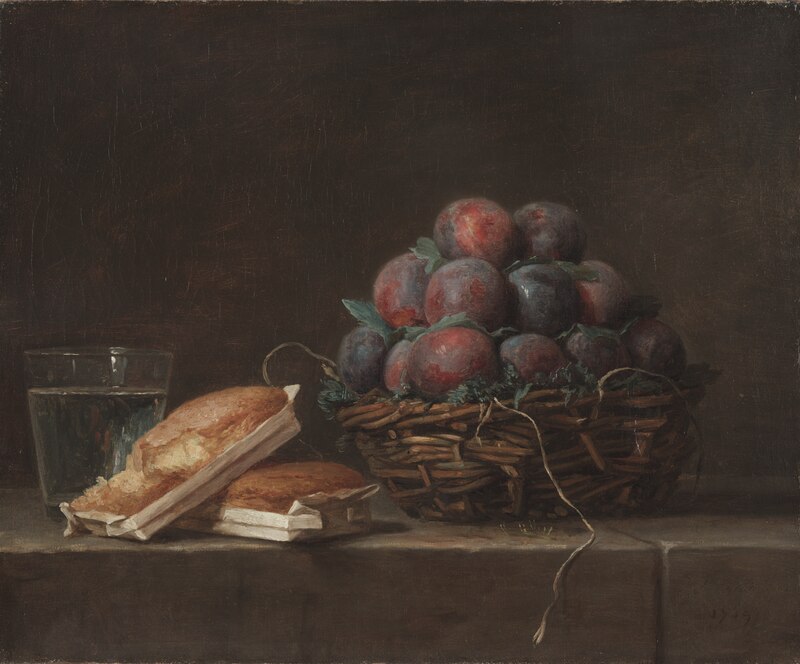
Anne Vallayer-Coster, Basket of Plums, c.1769, Cleveland Museum of Art, Cleveland, OH, USA
Sensuality and Perfection
Contemporary critics of Vallayer-Coster’s work were quick to highlight the sensuality of her work, often drawing comparisons between the demure respectability of the artist and the rich colors, luscious textures, and indulgent luxury of many of her still-lifes. The simplicity of her Basket of Plums, containing just glass, bread, and fruit, belies the cleverness with which she constructs the still-life and her manipulation of the viewer’s senses.
There is a fresh bloom on the plums, created with loose brushwork and bare dashes of highlights, each individualized with subtle tonal shifts to suggest the succulent flesh beneath. The basket’s unbound strings act like the draperies in Roslin’s portrait, suggesting that these are attractive and available. The strand falls forward towards the viewer, over the edge of the stone shelf, almost like an invitation.
In contrast, the bread is crusty and crisp, contained in its angular wrapping, skillfully handmade by a baker, just as the artist composed and structured the painting. Finally, the glass of water, clear and pure, might again serve as a metaphor for the artist’s eye. The scene is illusionistically perfect but is much more: a deliberate manipulation of the senses and a still-life tour-de-force.
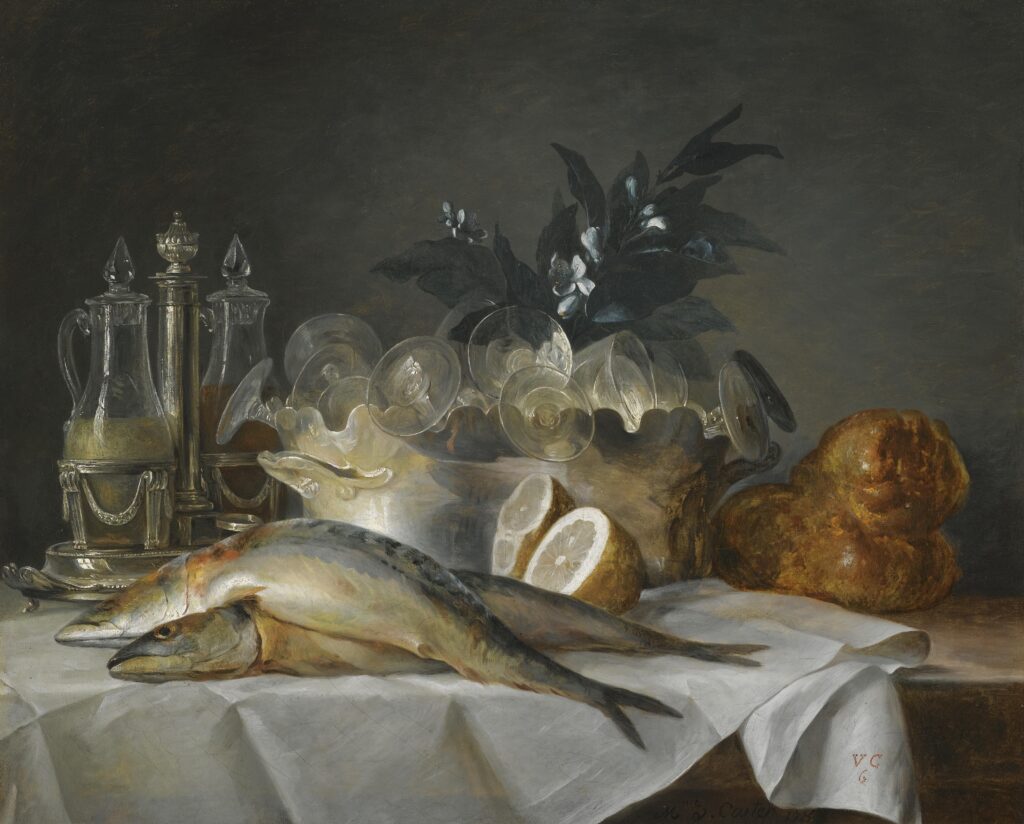
Anne Vallayer-Coster, Still Life with Mackerel, 1787, Kimbell Art Museum, Fort Worth, TX, USA.
Still Life Variety
Just as Vallayer-Coster tried to prove her ability in several genres, she also painted various still-life subjects, from the every day to the exotic, from the sparse to the abundant. Works like Basket of Plums and Still Life with Mackerel exploited items that might be found in the average kitchen, while others showcased exotic fruits like pineapple and extravagant feasts.
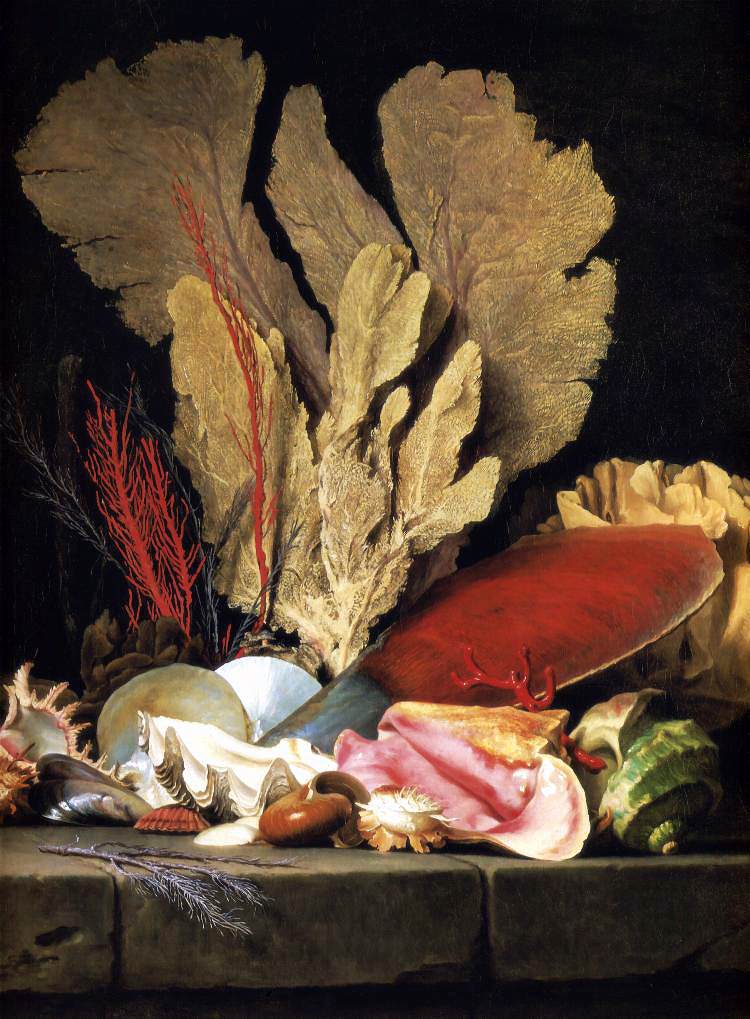
Anne Vallayer-Coster, Still Life with Tuft of Marine Plants, Shells and Corals, 1769, Louvre Museum, Paris, France
Still Life with Tuft of Marine Plants, Shells and Corals balances a scientific interest in the wonders of the natural world with a painterly appreciation of texture and surface. Vallayer-Coster creates an almost surrealist intensity with the stark illumination of the polished whites and creams in the foreground and the crisp tree-like corals against the dark behind.
She was also a master of precisely rendered yet blousy flower arrangements, in which bright blooms spill over elegant, often curvaceous vases. They have a Rococo exuberancy, which might be interpreted in sexualized terms. Yet this is underpinned by Vallayer-Coster’s training as a botanical artist and her skill as a colorist.
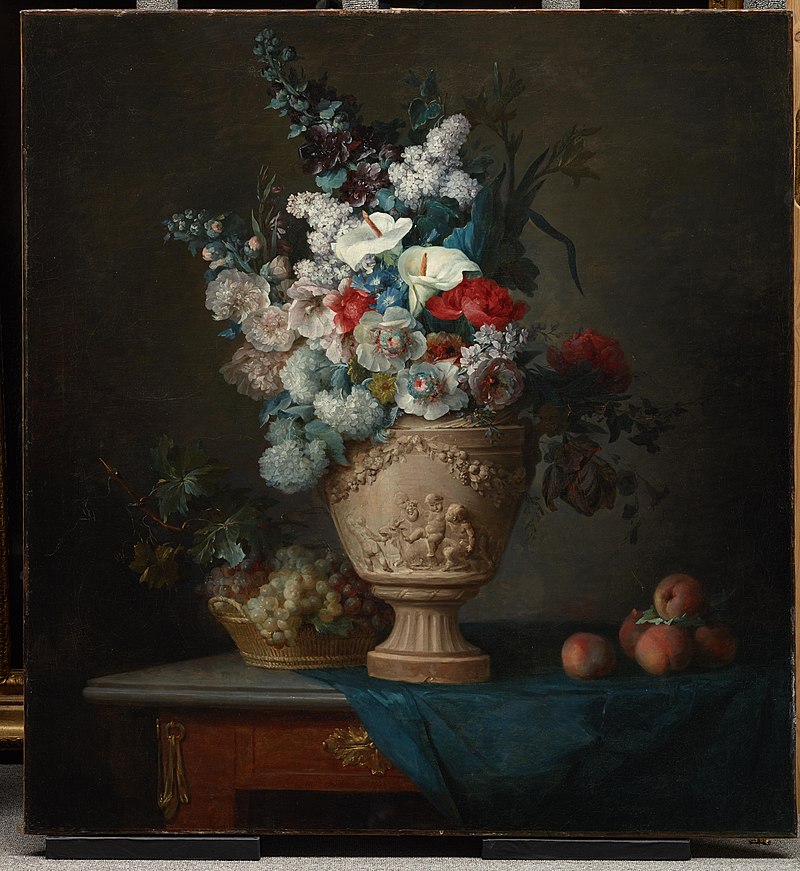
Anne Vallayer-Coster, Bouquet of Flowers in a Terracotta Vase with Peaches and Grapes, 1776, Dallas Museum of Art, Texas, USA
Masculine and Patriotic Subjects
The tricolor palette of Bouquet of Flowers in a Terracotta Vase with Peaches and Grapes exploits the French flag’s red, white, and blue, which Vallayer-Coster often used. On other occasions, she explicitly showed military insignia, including a flag, helmet, and drum.
While it was politically expedient to represent herself as a patriot, she also deliberately chose masculine subjects. Again, Vallayer-Coster was determined not to be restricted by her gender. She produced hunting-themed still lifes, with dead animals and guns, as well as more intellectual – and therefore, by the stands of the time, more masculine – displays of books, music, and historical artifacts.
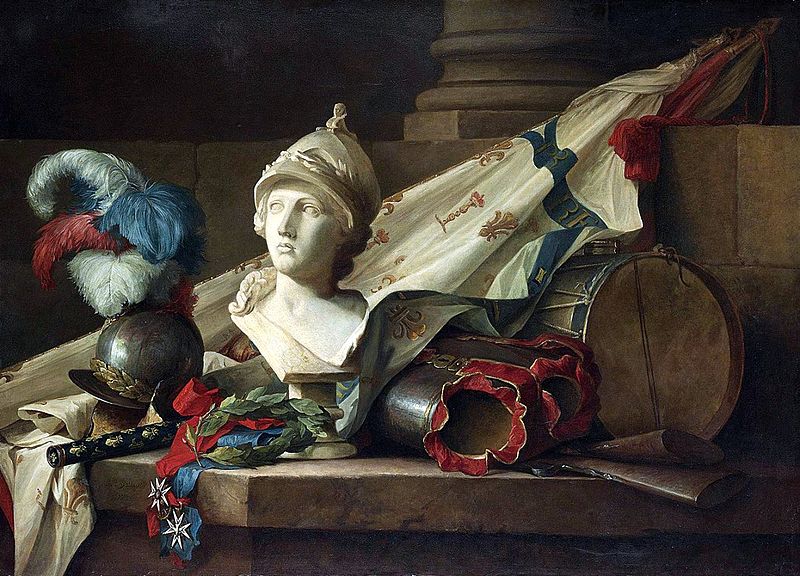
Anne Vallayer-Coster, A Bust of Minerva with Armour and Weapons on a Stone Ledge, 1777 (Wikimedia Commons)
The Impact of the French Revolution
No amount of political and social savvy could get Vallayer-Coster through the events following the 1789 Revolution unscathed. The monarchy fell, Marie Antoinette was guillotined in 1793, and the artist probably did well not to be arrested or forced into exile herself. She seems to have returned to her roots, keeping a low profile working in the Gobelins factory, which had produced tapestries from her designs throughout her career.
Vallayer-Coster’s reputation never recovered despite support from Napoleon’s wife, Empress Joséphine, who acquired at least two of her paintings in 1804. Nevertheless, she continued to paint, mainly on floral subjects, increasingly in watercolor or gouache, which could be produced more cheaply and quickly.
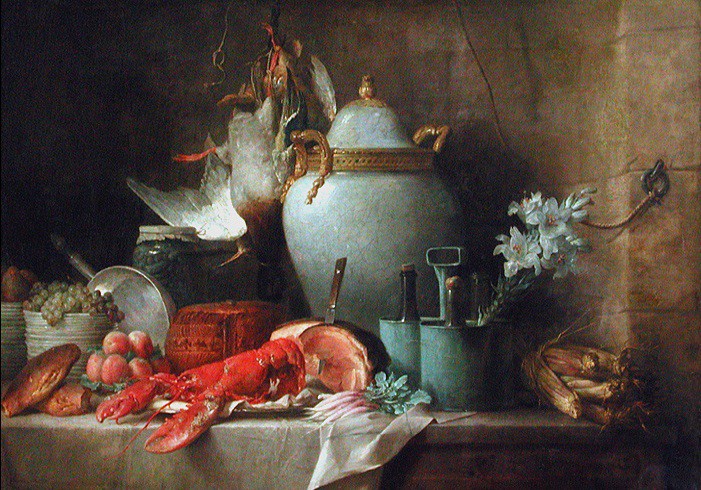
Anne Vallayer-Coster, Still Life with Vase, Lobster, Fruits and Game, 1817, The Louvre Museum, Paris, France.
A Royalist to the Last?
The 1817 Salon saw Vallayer-Coster’s last exhibited work, Still Life with Vase, Lobster, Fruits and Game, which she donated to the recently restored Louis XVIII. She was over 70 and, like the French monarchy, had survived political upheaval and changing fashion. The painting is an apotheosis of her career: a cornucopia of flowers, fruit, food, and crockery with a dash of symbolism in the form of the royalist lily.
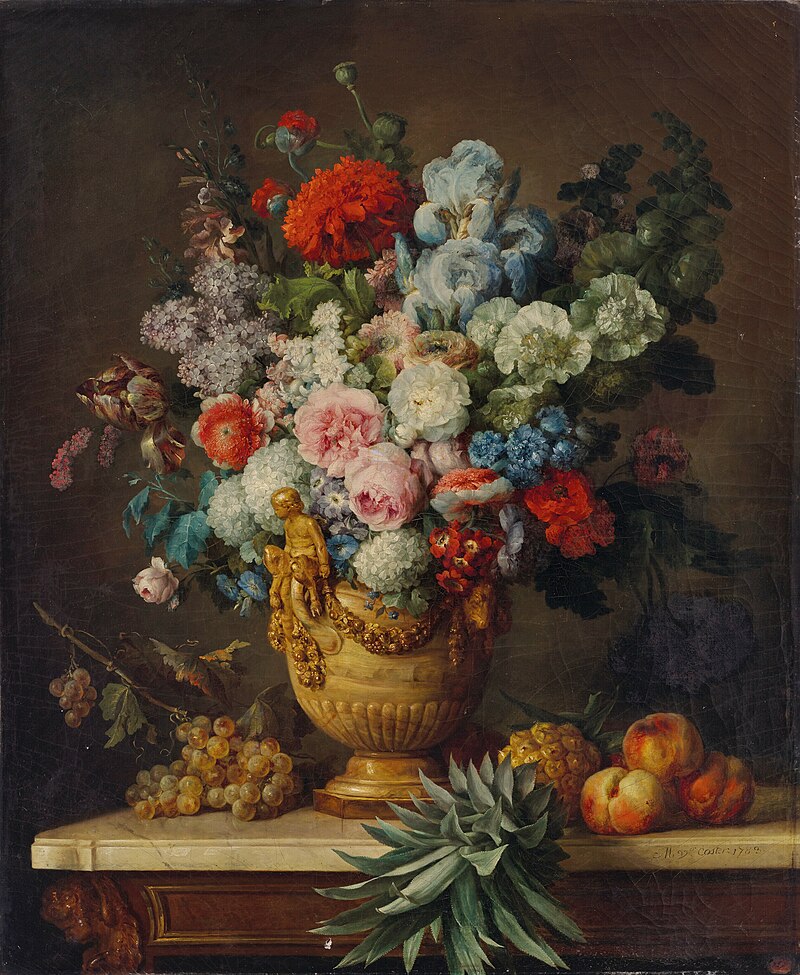
Anne Vallayer-Coster, Still Life with Flowers in an Alabaster Vase and Fruit, 1783, National Gallery of Art, Washington DC, USA
A sale of works after Vallayer-Coster’s death listed 160 paintings in her studio. She was undoubtedly a prolific artist who made a concerted, though largely unsuccessful, attempt to avoid being defined as a still-life specialist.
Having fallen out of favor during the 19th and 20th centuries, when her precision was deemed conservative and old-fashioned, she is experiencing a resurgence in popularity. A major touring exhibition of more than 35 of her works was held at the National Gallery of Art, The Frick Collection, and the Musee des Beaux-Arts de Nancy in 2002-2003. In 2023, Still Life with Flowers in an Alabaster Vase was bought by the National Gallery of Art in Washington, DC, for a record price of $2.8 million. Anne Vallayer-Coster is finally being recognized as one of the great painters of still life.



